If You Ever (IYE) Decide to Collect Vintage Watches - Vol. I
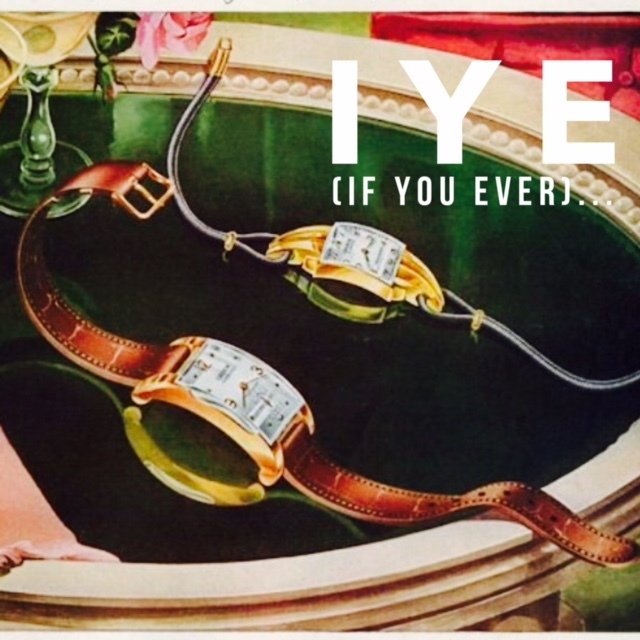
I’ve been fascinated by old watches since I was a kid and to this day I can’t explain why. I still own the first wristwatch my parents ever bought me, a 1970’s Timex with a groovy Speidel band. When I was a child I always had to fight the urge to pry off the back of the watch to see how it worked. It’s a miracle this Timex even survived my childhood.
As I young boy I would page through magazines looking at watch ads, dreaming of one day owning some of them. If we’re lucky, one of the luxuries of middle age is to have the means to make some of our childhood wishes come true. I did exactly that. My years of watch collecting began in the late nineties. I had just sold my first house near the top-end of a real estate bubble in 2005 and had disposable income for the first time in my life. I decided it was time to finally dip my toe into the ocean of watch collecting.
The era I that I was most drawn to was the 1920’s through the 1940’s. This was considered by most to be the golden age of American watchmaking and these are the watches I zeroed in on. The first brand that caught my interest was the Gruen Watch Company, mainly because they originally began in my hometown of Columbus, Ohio. Click here for more history on the company.
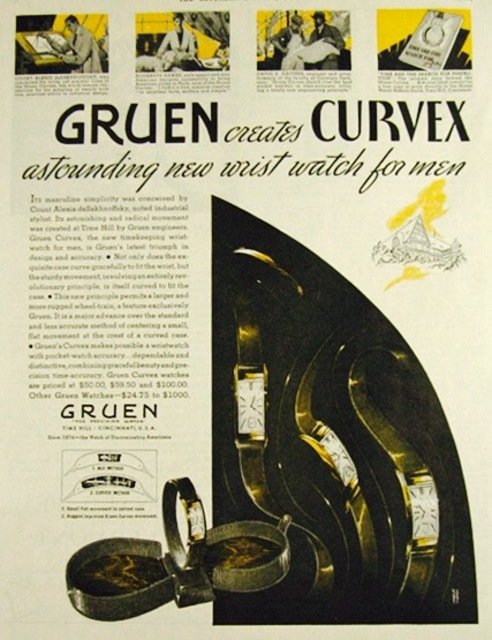
1920’s Gruen Quadron
After lots of browsing on the internet I found a 1920’s Gruen Quadron tank (tank merely means square case) watch in solid white 14 carat gold from an elderly watch collector in Maine. This Quadron was a beauty. It had black enamel face, which was rare for the time, and an ornate filigree design etched into the sides of the case. As you can see from the picture below the movement was a work of art. Rumor had it this 17 jewel wind up movement in this watch was also used in the Rolex Prince model from the same era.
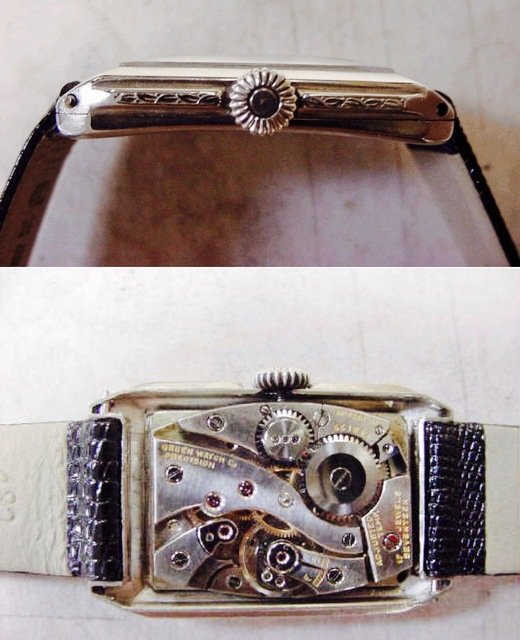
(Detail of Quadron case etching and movement. Can you believe the movement is almost 100 years old?)
Vintage Watch Fact: The jewels in a manual watch movement are made of synthetic rubies and are essentially the bearings that reduce friction between the multitude of parts that make the watch run.
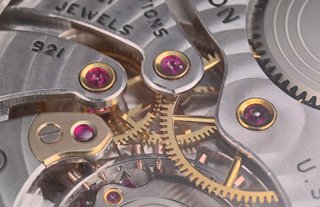
In theory, the higher the jewel count, the more accurate the watch but many believe there’s no real benefit of having more than 21 jewels. The Quadron was a leap in watchmaking technology in the 1920’s because it was one of the first to employ a square (tank) case and larger movement making it more sturdy and robust than most smaller round movements of the day.
1940’s GRUEN CURVEX (model 440)
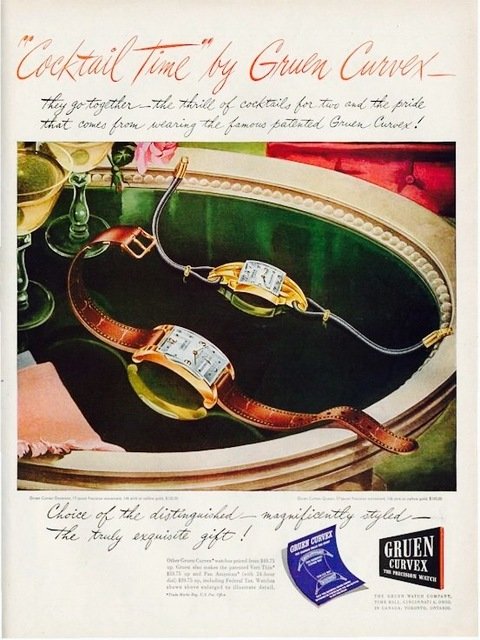
My next acquisition was another Gruen, a 1940’s Rose Gold Gruen Curvex (the Curvex is pictured below on the right, the Quadron is on the left.) The Curvex is the epitome of sleek Art Deco design. The Gruen Curvex was very unique because both the case and the movement were gracefully curved to fit your wrist. Generally the longer the case, the more prized the Curvex model was. My rose gold Curvex (model 440) measured 40mm length from lug to lug. The largest Curvex of all was Majesty, measuring in at 53mm in length from top to bottom, it stretched completely across a grown man's wrist.

The first impression I had when I strapped a vintage watch on my wrist was how much smaller they are than modern watches. They are so much smaller, in fact, that I wondered if it was a woman’s watch. Wristwatches came into fashion during World War I when soldiers, out of necessity, modified pocket watches to wear on their wrists so they could have instant access to the time. After the war, as the technology of watchmaking advanced, it became a status symbol to wear a smaller watch on your wrist.
After the initial shock of the smaller size of the vintage watches subsided I realized how much more comfortable than the oversized and heavy timepieces of today. Wearing a ticking piece of history on your wrist really makes you appreciate the craftsmanship of a bygone era.
Vintage watches are also an incredible value when you consider you would need to spend several thousands of dollars for a modern timepiece of the same build quality and attention to detail. Not all vintage watches are created equally so it's imperative that you do your homework or it's very likely you'll get burned. On the other hand, if you are educated you can make a great investment that can increase dramatically with time.
Stay tuned for Vol. II of (IYE) Decide to Collect Vintage Watches where I’ll delve a little deeper into the details of collecting vintage watches and share more of the timepieces in my collection.
Do you have any questions about vintage watches or collecting? If so, feel free to leave them in the comments below.
Check out Vol. II of If You Ever (IYE) Decide to Collect Vintage Watches.
I am an American novelist, poet, traveler, and goofball. To follow my unfolding story please visit my website here to sign up for my author newsletter.

well although I've never been particularly interested in watches, I found this piece very engaging. The world of vintage watches is a new one for me and they are gorgeous and actually quite facinating as it turns out!
Thanks @natureofbeing! I'm glad you enjoyed it. There are lots of deals to be found out there men's watches from this era are small enough they could easily be worn by women today. The curvex would look great on a woman's wrist.
great to know!
You have the wheels turning in my head, Eric. Thanks for writing about an interest we share.
You're welcome! There are 2 or 3 more posts to come! Are you thinking of an art project?!
Solid post, I have an Omgea watch from the 1950s..possibly before. It was my grandfathers. I'm not sure how much it is worth, maybe I'll share it on Steemit some day. Upvoted.
Thanks! Omegas from that era are high-end watches. They made all of their movements in-house, which make them more desirable to collectors. If it's a Constellation model it could be worth a lot.
Thanks for the info, I'll probably talk about it here one day and post a pic. Keep up the posts brother, cheers.
Something about the mechanics draws me in too... but my budget is limited to a Seiko Sports 5 automatic. Luckily for me it has a clear back so you can see the workings, a couple of jewels, springs and the automatic winder. Maybe one day I'll be able to afford something that doesn't +/- a minute or two a day (that's automatic too)
Yeah, the mechanics are fascinating, aren't they? There's nothing wrong with a Seiko! My everyday watch is a Seiko 007 diver with a Nato strap, it's actually my favorite.
Yeah, the diver is a nice looking watch. My sports 5 (NATO band too) kept perfect time for its first 2 months, then started gaining/loosing a minute or so a day. I've had it for almost 3 years now and it's still ok, still only a minute or so out per day. The band is looking a bit worn though.... but if I didn't haves phone or computer at hand to have the exact time I'd have to replace it.
That Seiko movement should be able to be adjusted by a watchmaker to run more accurately if it bothers you. It would probably cost $20-$30. My Seiko runs gains about a second a day.
My Seiko diver:
Yeah, I should probably look into that - I can see the little adjustment thing through the back of the case. It only cost me $120AUD, so maybe it's worth spending some more on a service. Thanks for the idea!
You're welcome!
Funny the same happened to mobile phones for a while. They got smaller and smaller every year and it probably was also for showing of technical advancement.
I only recently started to wear a watch again. I was given an Ice-Watch but I doubt it will impress any watch lover, like yourself.
Great article! looking forward to part 2!
I appreciate your comment @exyle! I never thought about the parallels with phones but you're right! I'm thinking of delving into the Apple Watch after the holidays but I don't know if I want one more thing to keep charged. Automatic watch movements are wound by the wearer's physical motion..I often wondered why Apple didn't come up with a way to harness kinetic energy to keep the Watch charged? I've never seen an Ice Watch, what does it look like?